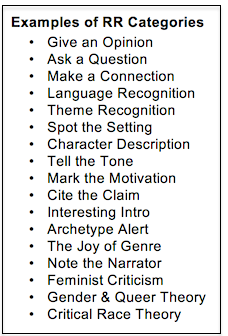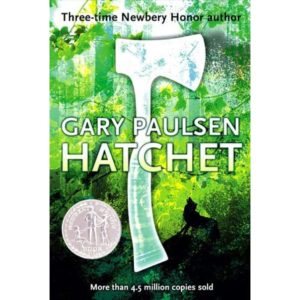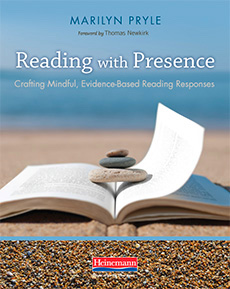This Strategy Promotes Real Reading Discussions
If you walked into my classroom, you would see students who voice their opinions, who freely ask questions, and who make all kinds of connections.
You’d see students who focus on language and craft, who examine texts through the use of literary devices and archetypes and even formal literary criticism, and who constantly refer to the texts as they discuss. They do these things consistently, organically, and always in variety, based on their own inklings, curiosities, and interests.
It wasn’t always this way. I used to assign a reading and then give students comprehension questions to check their understanding. But the use of Reading Responses has transformed my entire approach to teaching textual analysis.
With the Reading Response system, each student can—and is expected to—bring his or her real self to the table.
Why Reading Responses?
By writing and sharing Reading Responses, instead of simply “finding the answer,” as one would with a set of comprehension questions, the goal is to contribute to the discussion.
What’s the difference? When your only goal is to contribute to the discussion, it’s okay to be wrong. You can ask a “dumb” question. You can give your opinion freely. You can use your life—your outside reading, your knowledge about TV and movies, your family stories. You care about your groupmates’ thoughts, perhaps, and not just “what the teacher wants.”
Will you arrive at “The Right Answers”? Some, for sure. But more importantly, you will meander along the path of deep thinking, the road that leads to evidence-based interpretation rooted in personal experience, prior knowledge, and engagement. The road, perhaps, of personal growth.
And isn’t that why we all teach in the first place? If we can get students to be present for their own education, we have succeeded. I call this reading with presence: reading with your whole self, your true self, your memories, your opinions, your willingness to learn and grow.
The Four Rules
Writing Reading Responses (RRs) is a daily or almost-daily practice of having students craft brief, structured responses to whatever text they have read. There are four rules to writing a Reading Response:
- Choose a category of response, using the list of possible categories, and write the category name at the top of the response.
- Develop an original thought within that category and write out the thought.
- Find, copy, and cite a line, paragraph, or page from the text that relates to the original thought.
- Keep writing and thinking for at least five sentences.

The RR categories are meant to be a vehicle to help students think more clearly and deeply about a text; they are the scalpels students can use to dissect the text. I give students a sheet of the category titles and some thinking prompts to go with each. The rest is up to them.
Five Popular Categories with Examples
Here are five of the most popular categories in my class with their prompts, and student examples of RRs for each
1. Give an Opinion: Tell what you think or feel about a certain part, and why. You could react to an aspect of character, plot, theme, language, tone, style—anything in the text. But you must be specific.
Give an Opinion for The Eye of Minds (J. Dashner) – by Noelle

2. Make a Connection: A certain point in the text reminds you of another story, poem, movie, song, or something in “real life.” How are the two alike? Be specific.
Make a Connection for “The River Merchant’s Wife: A Letter,” (Li Po) – by Callie
Li Po’s poem “The River Merchant’s Wife” reminds me of Taylor Swift’s song “Come Back… Be Here.” Po’s poem tells of a young girl who at first resists her marriage, but then learns to love and depend on her husband (“I desired my dust to be mingled with yours / Forever and forever and forever” lines 12-13). So when her husband leaves for business, she feels isolated and old.
Likewise, Taylor Swift’s song is about how at first she didn’t want to be attached to her partner, but she did. So when he left her, it ruined her. Swift sings, “And this is when the feeling sinks in / I didn’t want to miss you like this / come back… be here.” Both the poem and the song show longing for a partner that is gone.
3. Language Recognition: You notice some engaging sensory details, a simile or metaphor, some onomatopoeia or alliteration, some parallelism, or something else. Whatever you notice, quote it, and explain how it adds to the text. Does it contribute to the mood or characterization? Does it relate to a theme? Could it have a deeper meaning? What would that be?
Language Recognition for The Young Elites (M. Lu) – by Isabel
I think the description of Gemma’s laugh is a beautiful description that gives powerful insight to her character. On page 185, paragraph 6, the laugh is described as “a bright ringing sound, the laugh of someone who’s loved.” The sound of the laugh suggests to me that Gemma is an optimist, as well as surrounded by friends and family. Also, this is amazing personality expressed in this laugh is probably going to draw Adelina and her closer. As well as this, the wording in this description was so well done, one could almost hear the laughter for themselves. Gemma could be well analyzed by her marvelous giggle.
4. Mark the Motivation: You realize a character’s motive(s)—what a character wants. Explain what this/these are and how it affects the story or other characters. Why are these motives important?
Mark the Motivation for Hatchet (G. Paulsen) – by Will

That night, Brian broke down and almost took his life but in the morning, he woke up and made a decision right then and there that he would not let death win him over, hence being his motivation to keep going. “He was not the same. The plane passing changed him, the disappointment cut him down and made him new…he would not die, he would not let death in again” (pg. 46). This specific case of motivation is also intriguing because it seems to be a reoccurring event where people almost take their lives but then decide they actually want to live afterwards.
5. WW_S?: (What Would ______ Say?) Fill in with the name of an author, historical figure, scientist, scholar, or teacher. How would that person respond to a certain spot in the text? Why? Be sure to explain the person’s philosophy / focus and how it relates to the text.
What Would Mr. Hanyon Say for Confucius’ The Analects – by Arla
The fifth aphorism on page 269 reminded me of Mr. Hanyon, our athletic director. He strongly approves of positive reinforcement from captains / team leaders. The aphorism said, “Keep order among them by chastisements, and they will flee from you, and lose all self respect… Keep order by ritual and they will keep their self-respect and come to you of their own accord.” I think Mr. Hanyon would like this quote because it shows the power of positive leadership. Rather than the leader being “bossy” and bringing his/her team down, he/she is leading by example. This leader is showing his/her team/community the right way to act, rather than punishing them for acting improperly.
Students Have Something to Say Now
Once students have written an RR or two about a text, they have something to say in class. It may be a minor point, or it may be a major point, but it is a concrete thought and it is tied to a specific part of the text. No longer can a student say, “I don’t know” when asked to react to a reading. When given time to write, and a list of choices to scaffold their reactions, all students can come up with something.
With Reading Responses, class time becomes a time of meaningful discovery. Students do not passively ingest information but actively create it through their own thinking, writing and discussion. The role of the teacher becomes one of backstage facilitation, expert clarification, and joyful encouragement. RRs are like cinder blocks—small and concrete, manageable for one person to carry. But when used together, all manner of building becomes possible.

This article is adapted from Marilyn’s new book Reading with Presence: Crafting Meaningful, Evidenced-Based Reading Responses





































Hi there! This is great information. I see that you mentioned a sheet you give the students with some thinking prompts. Is that something you have made available for others to use for free or through TPT? Thanks!